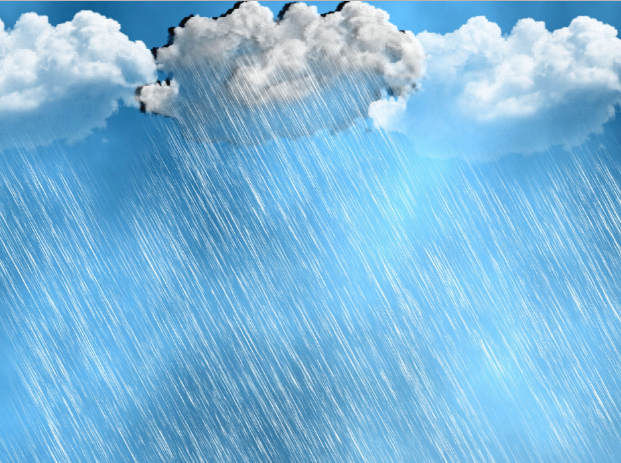UW Researcher Leads Study of First Quantifiable Observation of Cloud Seeding
Published on by Water Network Research, Official research team of The Water Network in Academic
A University of Wyoming researcher contributed to a paper that demonstrated, for the first time, direct observation of cloud seeding -- from the growth of the ice crystals through the processes that occur in the clouds to the eventual fallout of the ice crystals that become snow -- and how the impacts could be quantified.
The research, dubbed SNOWIE (Seeded and Natural Orographic Wintertime Clouds -- the Idaho Experiment), took place Jan. 7-March 17, 2017, within and near the Payette Basin, located approximately 50 miles north of Boise, Idaho. The research was in concert with Boise-based Idaho Power Co., which provides a good share of its electrical power through hydroelectric dams.

Representative image, Source: Public Domain Pictures, Author: kai Stachowiak
“No one has ever had a full comprehensive set of observations of what really happens after you seed the cloud,” says Jeff French, an assistant professor in UW’s Department of Atmospheric Science. “There have only been hypotheses. There has never been a set of observations from one campaign that shows all the steps that occur in cloud seeding.”
French credits modern technology, citing the use of ground-based radar, radar on UW’s King Air research aircraft and multiple passes of the mountain range near Boise with making the detailed cloud-seeding observations happen. Despite numerous experiments spanning several decades, no direct observation of this process existed before SNOWIE, he says.
French is the lead author of a paper, titled “Precipitation Formation from Orographic Cloud Seeding,” which appears in the Jan. 22 issue of the Proceedings of the National Academy of Sciences (PNAS), one of the world’s most prestigious multidisciplinary scientific journals, with coverage spanning the biological, physical and social sciences.
Other contributors to the paper were from the University of Colorado-Boulder, University of Illinois at Urbana-Champaign, the National Center for Atmospheric Research (NCAR) and Idaho Power Co.
“SNOWIE was a great collaborative effort, and it shows the value of private, public and academic partnerships,” says NCAR scientist Sarah Tessendorf, a co-author of the paper.
Tessendorf notes that SNOWIE grew out of research that Idaho Power Co. had conducted with NCAR to improve its cloud-seeding program. This included the development of high-resolution computer modeling approaches to simulate cloud seeding, enabling researchers to better evaluate its impacts.
“This research shows that modern tools can be applied to long-standing scientific problems,” says Nick Anderson, program director in the National Science Foundation (NSF)’s Division of Atmospheric and Geospace Sciences, which funded the study. “We now have direct observations that seeding of certain clouds follows the pathway first theorized in the mid-20th century.”
Cloud seeding is a process by which silver iodide is released into the clouds, either from the air or via ground-based generators. In the case of the SNOWIE Project, the silver iodide was released by a second aircraft funded through Idaho Power Co., while the UW King Air took measurements to understand the impact of the silver iodide, French says.
In all, the UW King Air made 24 research flights or intense observation periods (IOPs) lasting 4-6 hours each during SNOWIE. Of those IOPs, cloud seeding occurred during 21 of the flights. During the last three flights, Idaho Power had to suspend cloud seeding because there was so much snow in the mountains already, French says.
While a good deal of research took place aboard the King Air, much of it also occurred on the ground. Numerical modeling of precipitation measurements was conducted using the supercomputer, nicknamed Cheyenne, at the NCAR-Wyoming Supercomputing Center. The numerical models simulated clouds and snow precipitation -- created in natural storms and with cloud seeding -- over the Payette Basin in Boise. The numerical models also allow researchers to study future storm events where measurements have not been obtained in the field.
“Midterm, it will help with those simulations we are running on Cheyenne,” French says. “Long term, we can answer questions with this data and simulations on how effective cloud seeding is in orographic clouds, and what conditions one can expect cloud seeding to be effective.”
Throughout the western U.S. and other semiarid mountainous regions across the globe, water supplies are fed primarily through snowpack melt. Growing populations place higher demand on water, while warmer winters and earlier spring reduce water supplies. Water managers see cloud seeding as a potential way to increase winter snowfall.
“Ultimately, water managers and state and federal agencies can make the decision whether cloud seeding is a viable option for them in terms of adding additional water to their supplies in addition to snowpack in the mountains,” French says.
Source: University of Wyoming
Media
Taxonomy
- Resource Management
- Water Resource Management
- Technology
- Sustainable Water Resource Management
- Natural Resource Management
- Urban Resource Management
- Water Resource Management